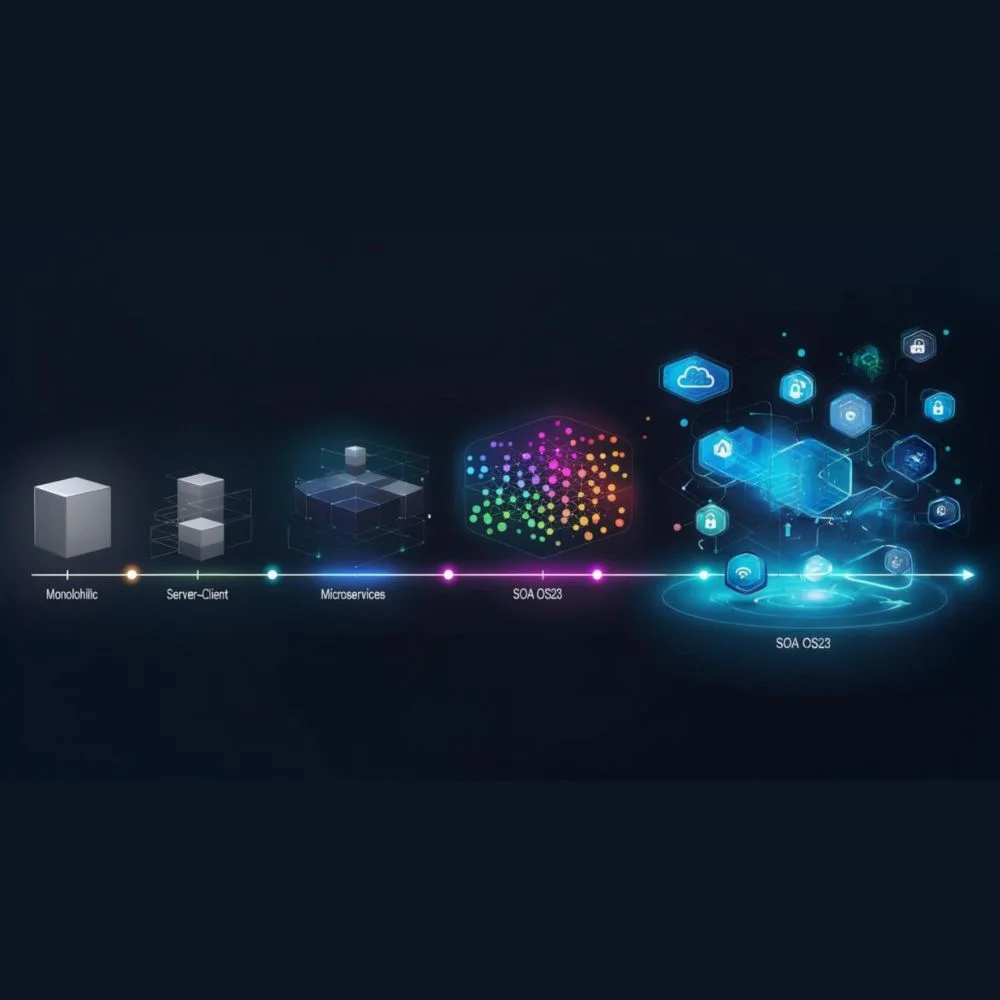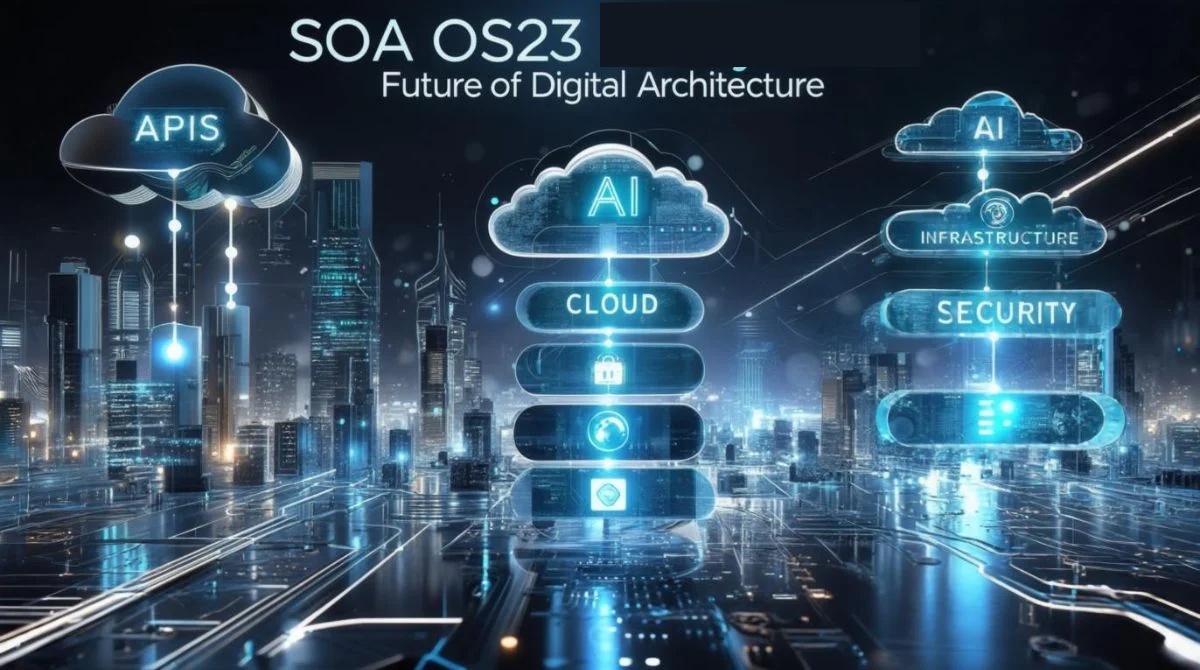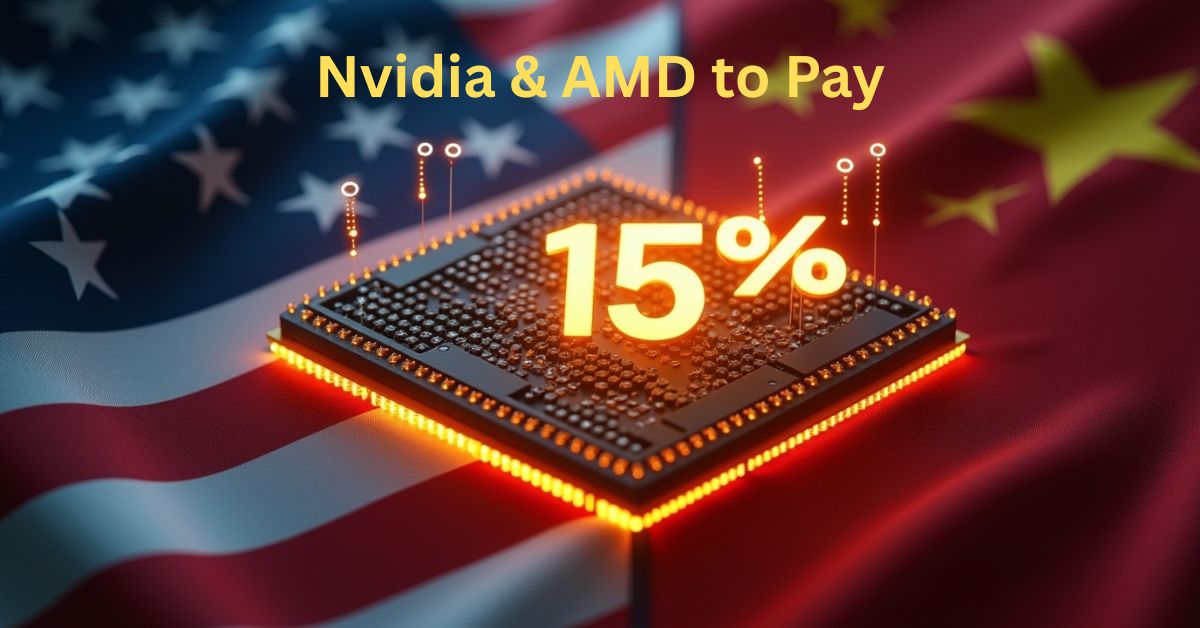When we talk about the Future of Digital Architecture, we mean how software systems and networks are designed to meet tomorrow’s needs. SOA OS23 is a modern way to shape this future. This article helps you understand what SOA OS23 is, why it matters and how it fits into digital architecture trends, using simple words.
What Is SOA OS23?
SOA OS23 stands for Service Oriented Architecture Operating System 2023. It builds on the old SOA idea where software is divided into small, reusable services but adds modern features for cloud, edge devices, AI and compliance. It’s not an actual operating system you install, but a way to design systems so they work better together.
Traditional SOA meant splitting big programs into smaller, independent parts that talk with APIs. SOA OS23 takes that further. It makes services smarter, modular and able to respond to events. It ensures services can work across cloud platforms, edge devices and legacy systems in a unified way.
The Evolution of Digital Architecture
Digital architecture has come a long way from the early days of monolithic systems where all components were tightly linked and hard to update or scale. Over time, businesses needed more flexibility, leading to the rise of client-server models, then service-oriented architecture (SOA) and eventually microservices. Each step focused on making systems more modular, scalable and easier to maintain. Today with the growing use of cloud platforms, artificial intelligence and connected devices, digital architecture continues to evolve toward event-driven and decentralized models like SOA OS23. This evolution aims to make systems faster, more adaptive and better at handling real-time data, security and compliance challenges.

Why This Matters for the Future of Digital Architecture?
Digital systems today are not simple. They stretch across multiple clouds, edge devices, IoT sensors AI models and regulatory restrictions. SOA OS23 gives us a blueprint to handle this complexity in a smart, flexible way.
- Built for events: Instead of just handling requests, it treats every input like sensor data or user actions as events that services respond to.
- Context aware service mesh: It routes service calls not just by address but based on meaning, location, compliance rules, load and more.
- Integrated compliance and ethics: Services include metadata about rules, audit logs and privacy policies from the start not bolted on later.
- Human in the loop design: In sensitive workflows health, finance, education people can intervene or approve actions when needed.
Key Features of SOA OS23
Here are the main traits that make SOA OS23 ideal for future systems.
- Hyper modular architecture: Services are small units doing specific jobs. They can be added, updated or replaced without affecting others.
- Cloud native and edge ready: Built to run in Kubernetes, containers and on edge devices with smart orchestration.
- Event driven: Instead of fixed APIs, the architecture uses streams of events for flexible communication.
- Semantic interoperability: It uses AI and mediation to translate between different data formats and models, so services truly understand each other.
- Policy and ethics at the core: Every service includes rules about access, data retention, regional legal norms making governance automatic.
- Self-healing and predictive orchestration: An AI layer monitors service health, predicts failures, adjusts load or restarts components without human steps.
Advantages for Businesses and Developers
Using SOA OS23 gives both teams and companies many benefits.
- Greater agility: You can develop, deploy, update services independently, speeding up changes.
- Stronger security and compliance: Built in encryption, zero trust patterns, policy tracing and audit logs reduce risk.
- Scalability and resilience: New services can scale horizontally and failures in one part don’t take down the whole system.
- Cost efficiency: Reusing existing services saves effort, while automation reduces manual overhead.
- Better collaboration: Legal, security, dev and ops teams align around the same service driven model and toolset.
How It Compares to Traditional SOA or Microservices?
| Aspect | Traditional SOA / Microservices | SOA OS23 |
| Design Focus | Independent services, API‑based | Event‑driven, semantic context, integrated policy |
| Compliance | Added separately | Built into each service |
| Orchestration | External tools or scripts | Intelligent orchestration layer with AI |
| Interoperability | Protocol‑based (REST, SOAP) | AI mediation across data models and meaning |
| Update Model | Roll‑out or blue‑green | Hot‑swap modular services without downtime |
Real World Use Cases
Healthcare
Patient data comes from wearable’s, doctors and diagnostics. SOA OS23 enables privacy-respecting data flows, AI-based decision support and compliance tracking all with human sign off when needed.
Smart Cities
Traffic signals, pollution sensors, energy grids and emergency services communicate through event streams that adapt to real time needs and policies city wide.
Finance
Transactions across banking, payment, fraud detection and compliance run on modular services that auto scale, encrypt data and enforce regulations.
Education
Learning platforms, student records, video conferencing and analytics services work together while honoring privacy rules and educators’ oversight.
Challenges to Keep in Mind
Implementing SOA OS23 isn’t automatic. Some challenges include.
- Complex setup: especially metadata, governance and orchestration layers.
- Learning curve: developers and architects need training on event driven and semantic design.
- Tool compatibility: older legacy systems may need upgrade or wrap adapters.
- Performance overhead: from many small services if not managed well.
- Operational maturity: needed for observability and fault tolerance planning.
Implementation Strategy
- Start small: Pilot SOA OS23 in one domain before wide rollout.
- Define governance rules: Set policies on compliance, privacy, security for all services.
- Build CI/CD pipelines: Automate testing, deployment, rollback and compliance checks.
- Monitor continuously: Use dashboards and logs to track service health, policy violations and performance.
- Train teams: Dev. security, legal and ops should all understand the service driven model and standards.
- Iterate and refine: Use feedback loops to tune orchestration, policies and deployment workflows.
Trends Shaping SOA OS23 in 2025 and Beyond
Looking ahead, SOA OS24 is anticipated to evolve through technological integration and the growing market demands within the construction industry. Some trends are already redefining standards for compliance.
1. AI-Driven Service Orchestration
- Smart orchestration engines now use AI to manage, scale and optimize services in real-time.
- Predictive algorithms identify potential failures and automatically correct them without human intervention.
- Machine learning enhances resource allocation and reduces downtime.
2. Edge-Native and Distributed Deployments
- SOA OS23 is becoming more finely tuned for edge computing scenarios.
- By operating nearer to end-users, services deliver faster performance with lower latency.
- Perfect for IoT, autonomous systems and location-aware apps.
3. Integrated Compliance and Ethical Governance
- Built-in policy layers automatically enforce data privacy, regional laws and audit trails.
- Services now include ethical metadata, tracking usage limits and permissions.
- Governance is no longer an afterthought its core to system design.
4. Event-Driven and Context-Aware Architecture
- SOA OS23 processes data as live event streams rather than simple requests.
- Services adapt in real time based on context such as user actions, timing and location.
- Ideal for adaptive apps like finance, logistics and smart cities.
6. Low-Code and Human-in-the-Loop Design
- Visual tools make it easier for non-developers to build service workflows.
- Human oversight can be built into sensitive automation (e.g., healthcare, education).
- Blends automation with human intelligence for safer, smarter systems.
6. Stricter Green Demolition Standards
Environmental standards are now mandatory and not open for debate.
- To keep meeting SOA OS23 compliance, using sustainable demolition methods like material separation and recycling is crucial.
- Recycled aggregates help support circular construction by reusing materials instead of sending them to waste.
- Low-emission equipment helps cut down on harmful gas release, reducing the overall carbon footprint.
- These eco-friendly choices will play a major role in meeting future compliance requirements.
FAQ
1. What is SOA OS23?
SOA OS23 is a modern method used to build and organize software systems. It breaks big systems into small parts called services. These services work together and can be easily updated, replaced or used in different ways.
2. Why is SOA OS23 important for the future of digital architecture?
SOA OS23 is built for the modern world. It supports cloud computing, AI, edge devices and even legal rules like privacy laws. It helps companies build systems that are fast, safe and ready for new technology.
3. Is SOA OS23 secure?
Yes. It is designed with safety in mind. It includes tools for privacy, data protection and following rules, so your system stays safe and legal.
4. What can we expect in the future with SOA OS23?
In the future, SOA OS23 will work even better with AI, run faster near users (edge computing), and follow rules automatically. It will help systems become smarter and easier to control.
5. Is SOA OS23 only for big companies or can small businesses use it too?
Both! While big companies can use SOA OS23 for complex systems, small businesses can also benefit by using smaller, reusable services that save time and cost. It’s flexible enough for any size of business.
How is SOA OS23 different from traditional software architecture?
Unlike old systems where everything was built together in one block, SOA OS23 breaks software into small, independent services. These services can work alone or with others, making the whole system easier to manage, update and grow.
Conclusion
The Future of Digital Architecture is turning toward systems that are modular, intelligent, event driven and compliance respectful. SOA OS23 is not just an upgrade of old SOA it’s a rethinking of how services operate, communicate and follow rules across cloud, edge and human interfaces.
For businesses and developers who want systems that adapt to complexity, enforce trust and empower change, SOA OS23 could become the new standard. If you’re designing the next generation of digital platforms, embracing SOA OS23 principles might give your architecture the flexibility, governance and longevity it needs.



